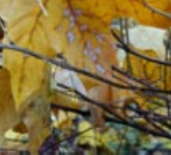Katagami: Web of Butterflies and Flowers
Published in: 17. Octave
“KATAGAMI has been an important part of Japanese material culture for almost five hundred years. Katagami stencils were used to decorate textiles using the katazome technique. This delicate resist dyeing technique involves applying rice paste to silk fabric through a stencil, followed by a rigorous process of repositioning the stencils and reapplying the paste. The entire fabric is then dyed, often repeatedly, to achieve the final result. The paste is then removed to reveal a pattern of exquisite spaces.
The detailed stencil cuts leave significant margins of negative space. The carving pattern is supported by an equally fine, although less noticeable, network of silk threads that stabilize the tiny pieces of paper.
Thin mulberry bark is stacked and a pattern is outlined on the top sheet, which is then cut out with a sharp, curved blade that captures all the layers. A supporting silk net is then inserted between the layers.
The resulting stencil, mounted on a fine mesh that does not interfere with the application of rice paste, is characterized by unprecedented clarity.
Until the third quarter of the nineteenth century, human hair was often used instead of silk in katagami stencils. In the 1870s, the French, by arranging paper cut-outs on a silk mesh stretched over a wooden frame, used Japanese techniques to develop an early version of silk screening.
Most of the stencils that survive today were made during the golden era of stencil making, the late Edo and Meiji periods, from about 1789 to 1912.
The surviving evidence, ironically, does not represent the creations of dyers, but only the work of stencil cutters.”
(From notes to an exhibit)
Summer rain – permeating
the roots of all things
in the underground solution of earth,
founding the material universe.
Summer rain – running off
bare leaves, bare arms,
as if involved in a tryst
with the three cool elements.
Summer rain – lingering
petunias fade with the season.
The new geese are gone,
having learned to fly.
Turning to the question of today’s work –
how many impressions can be made
from a breakable thing?
— 2007

(Photos by E. Starovoitova)

Speak Your Mind